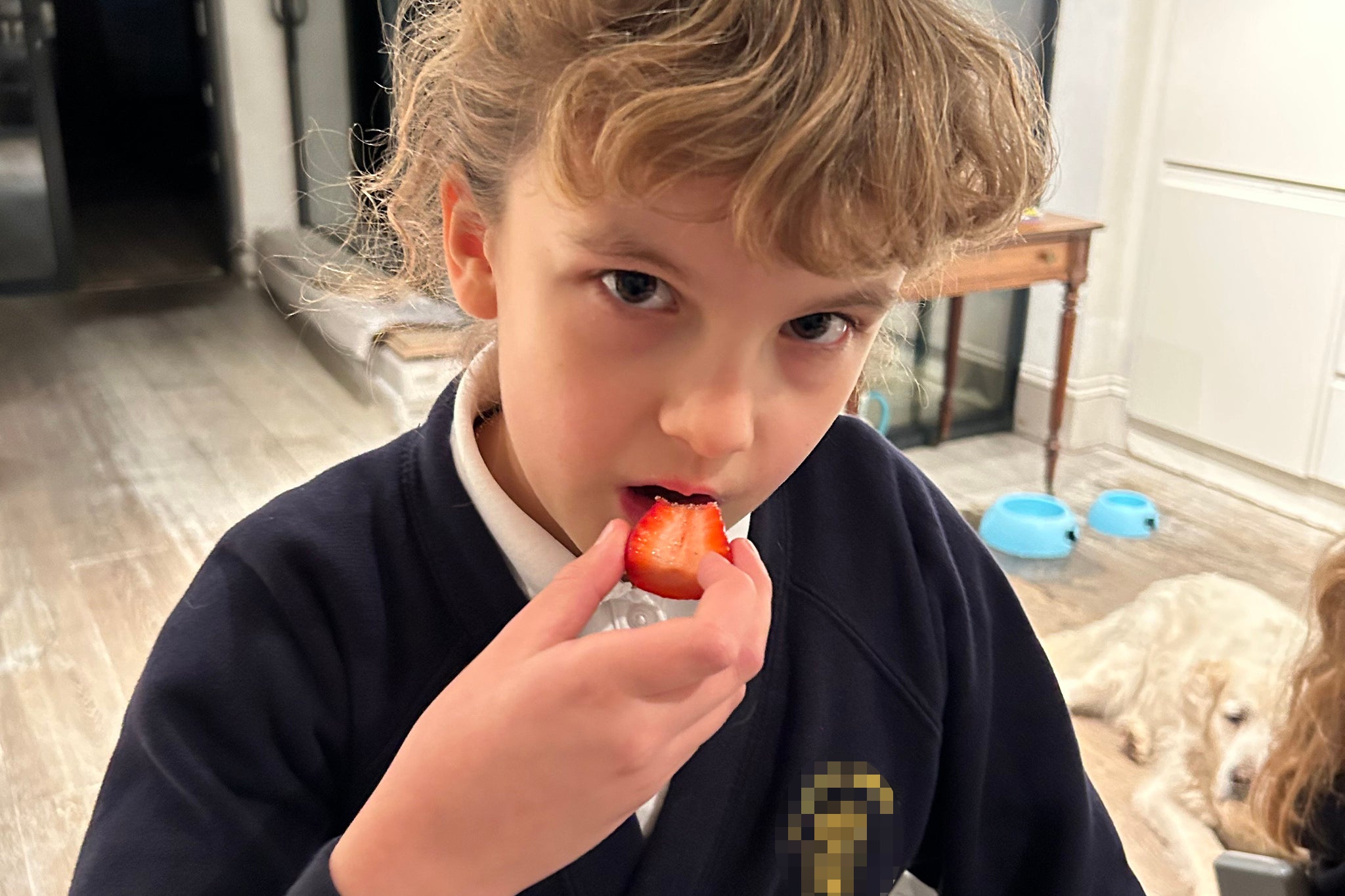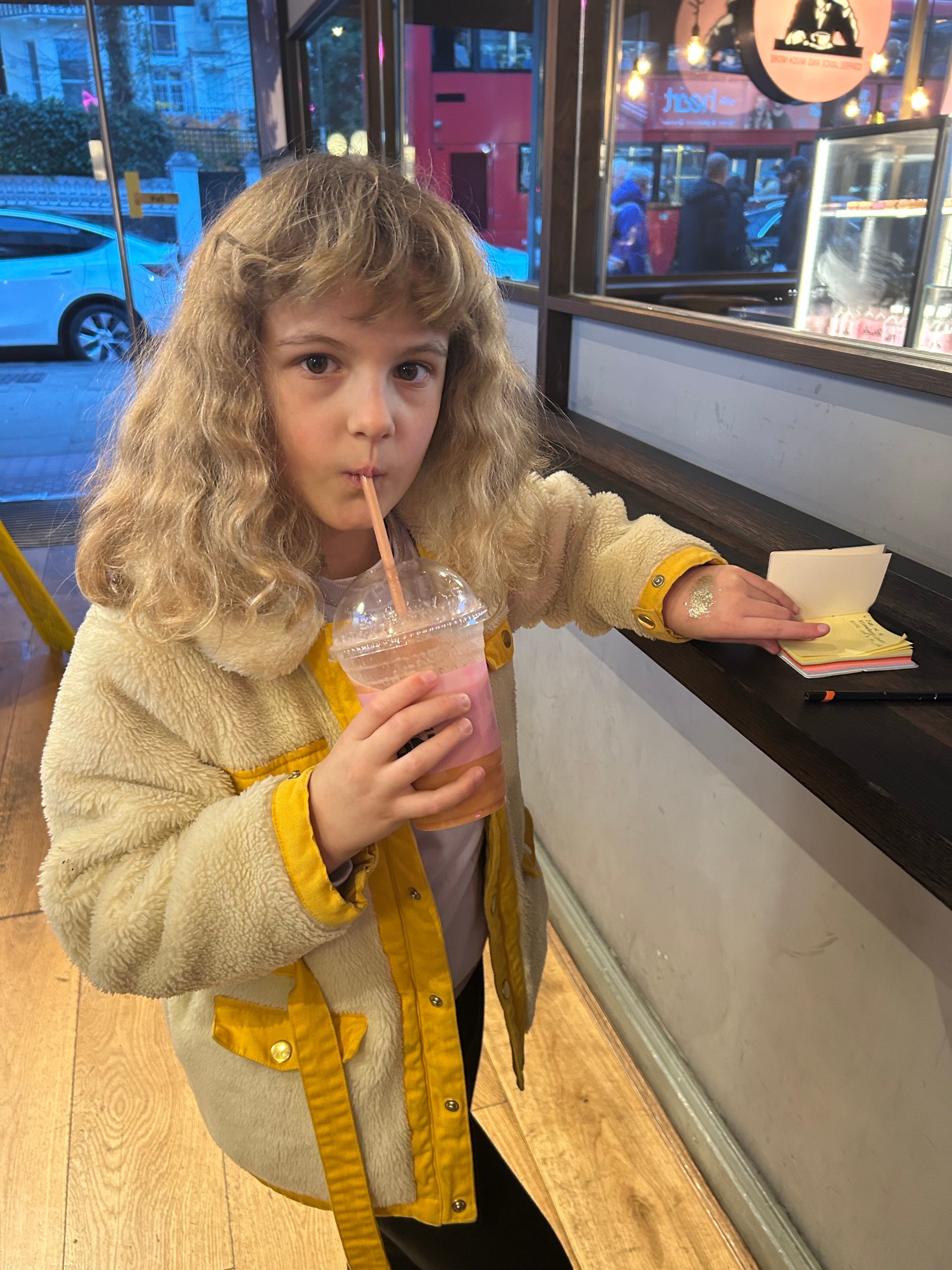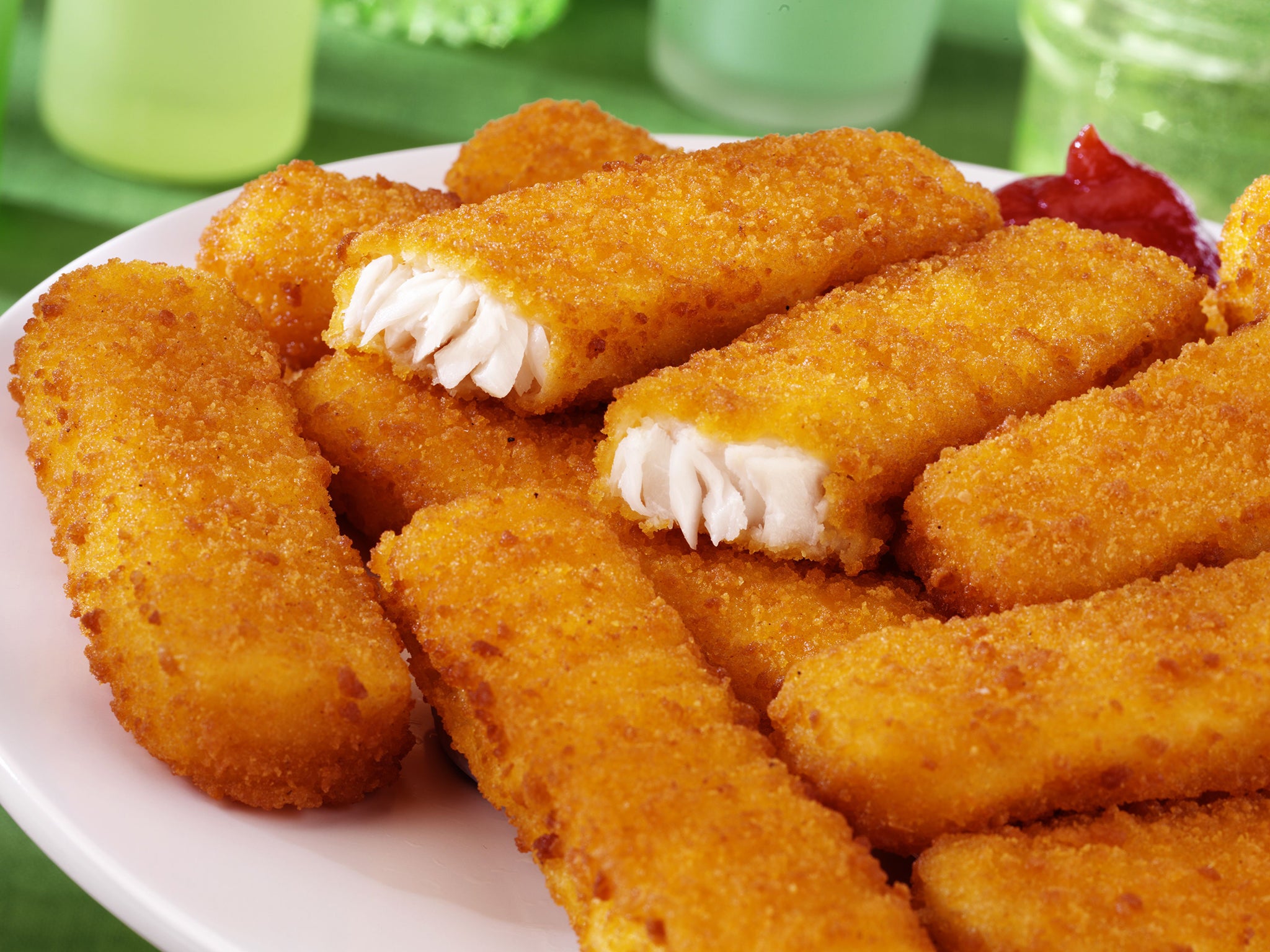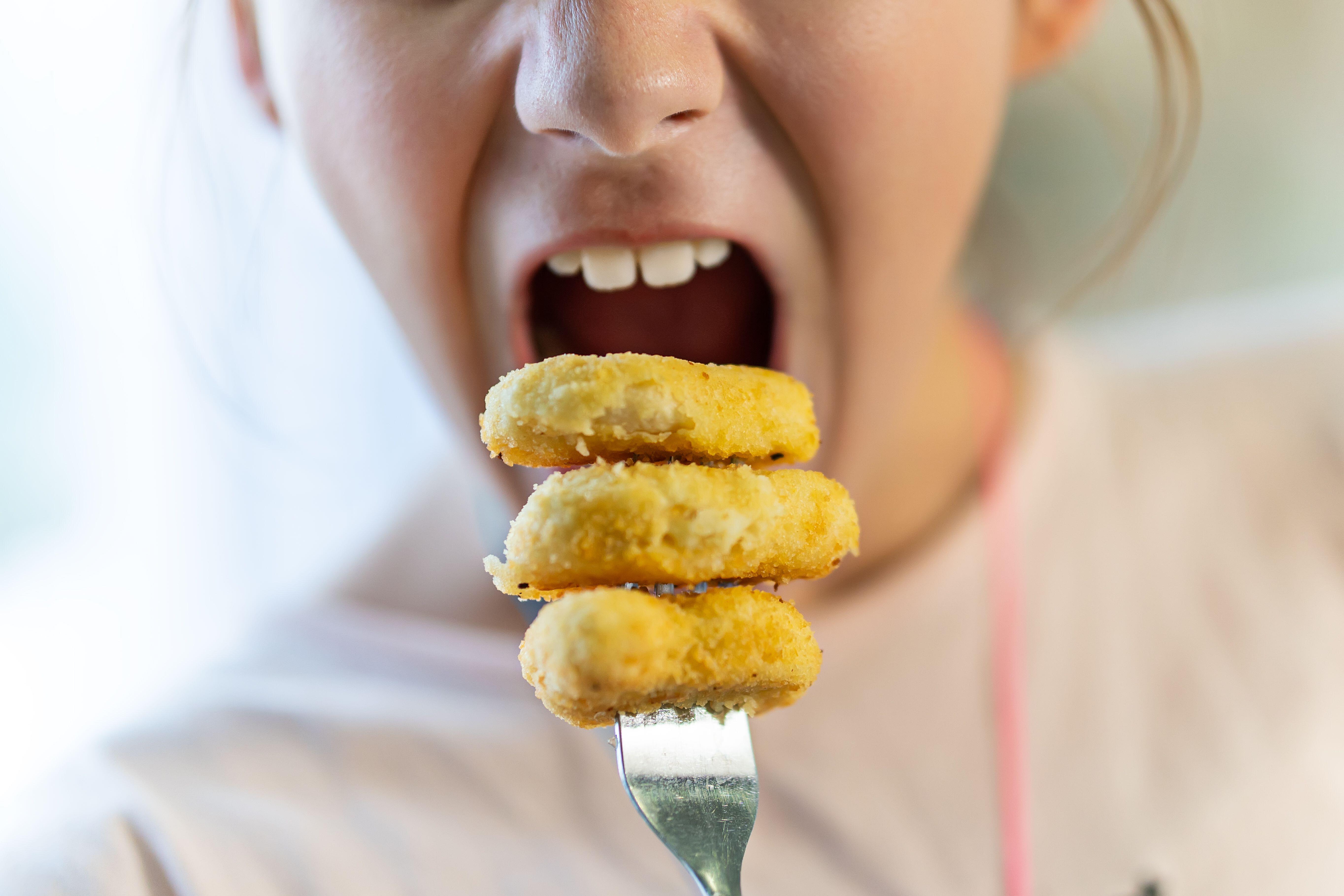
Is it all too good to be true? I’m filling up my shopping trolley with foods that my daughter, Lola, eight, would usually never eat in a million years: strawberries, bananas, cherries, corn on the cob, avocados, and Greek salad. But, in a few hours, I’m hoping she’ll gobble up the lot – and experience a profound turnaround in her eating habits.
We are off to see the top food phobia guru, Felix Economakis – a psychologist and clinical hypnotist and star of TV shows such as 2021’s Extreme Food Phobics on UKTV and 2007’s Freaky Eaters on BBC Three. He has told us to bring food to the appointment for Lola to try at the end of the session, including easy-to-heat and basic microwavable dishes: nothing too exotic.
I’d pre-cooked jacket potatoes and lasagne for her, along with foods Lola had written on a “dream list” that she’d love to eat if only she wasn’t too scared to do so, including juicy watermelon and sushi.
Lola’s relationship with food has been the same since she started eating solids – she got stuck in a rut of eating the same meals: pizza, fish fingers, pasta, and omelettes. Oh and freshly squeezed orange juice but only because I told her that her legs would fall off if she didn’t drink it. I thought she’d grow out of her faddishness around the age of five when she went to school. Instead, she refused school lunches – and I now send her in every day with... a pizza. It’s worrying. Her diet is high in processed foods, and when she goes on playdates, she only eats one brand of fish fingers and tomato pasta sauce.
I’ve tried talking to her about the health hazards of a bad diet, but it makes her scared and she bursts into tears. I’ve attempted all the tricks – making a smiley face with the food on her plate, bribing her with cash, and getting mad at her. None of it works. Her six-year-old sister Liberty eats a more varied diet, including a full range of vegetables and tries new things more easily. But she is also heavily influenced by Lola, which is another reason why I wanted to get on top of the issue. And when I saw the absolute terror Lola felt at being offered peas when she ate edamame without any problems, the only green food she will eat, I realised it was a phobia, rather than her simply being difficult.

I was under strict instructions from Lola not to tell a soul about where we were heading, as if there was some kind of shame attached to her seeking help. I tried to convince her that it was courageous – but she just said, “Shush mummy” and looked angry.
As we stood outside The Heath Therapies – Felix’s clinic in north London – armed with 10 bags, I realised I’d overdone it. I had enough food for a two-week holiday – and we could barely carry it up the stairs. Nevertheless, Lola was feeling very positive and excited about this new era of her eating. She certainly recognises the problem – and is keen to solve it.
Felix is one of the most sought-after practitioners for ARFID (avoidant/restrictive food intake disorder) in the world, and has been treating adults and children with food phobias for 18 years, using a combination of psychology therapy, hypnosis and neuro-linguistic programming (NLP). It usually only takes him one session costing £390 for a seismic change – and many of his clients are cured without the need for another one. He says there could be multiple reasons for Lola having a food phobia, such as a simple trauma as a baby from colic, choking, or a bad reaction to antibiotics when a child feels ill and the brain blames food. Unlike disorders such as anorexia or bulimia, it doesn’t have anything to do with concerns about weight or body shape.

As he shows us into his office he’s charismatic and lively. I notice he makes eye contact with Lola immediately. Evidently establishing trust straight away is key, not least since he sometimes resorts to hypnotism as a therapy tool. He’d reassured me that he didn’t necessarily rely on it during a session and it might happen spontaneously, or not at all – but I asked him not to mention the word to Lola in case she started to think he was Dracula.
We sit on a sofa while Felix sits on a chair at the other end of the big room. He asks us lots of questions about what Lola eats and why she can’t eat new foods.
“I don’t know,” she says, shrugging her shoulders. This, reassures Felix, is a typical response from a young child. It’s much easier to treat adults. “Not only are they more motivated because they are self-funding [the therapy], but if there is a block, they can articulate it better.”
The number of people in the UK who have ARFID – a previously little-known eating disorder, in which those afflicted avoid many foods – has risen sevenfold in five years, figures show. According to eating disorder charity Beat, about 5 per cent of the population are affected. It tends to manifest either as a phobia or a sensory processing disorder (SPD) version – a neurological condition that affects how the brain processes sensory information. The exact cause of SPD is unknown, Felix says, but it’s thought to have a biological basis – and it’s the type that, he says, is inexplicably on the rise. What’s more, the chances of children being traumatised by food are higher than for adults, which increases the probability of them developing ARFID-type symptoms. Some 80 per cent of Felix’s clients are children with food phobias. “Children are very impressionable and are more likely to make a big generalisation about food than an adult [after a bad experience],” he tells me.
He starts to “sell change” to Lola as if he’s a marketing executive. His manner is calm and methodical as he leads Lola down “a path of trust” with a “slow creep effect” – as he calls it – so it doesn’t “arouse defences”.

“Hey, the food Lola wants to try is not dangerous! It makes no sense, Lola.” He keeps saying her name until all I hear is “Lola, Lola, Lola”. He connects trying new foods to other learning successors in Lola’s life, such as swimming or riding a bike.
It is important, he says, that Lola understands the intricacies of her mind. He holds up both his hands mimicking them arguing with each other like he’s talking to two sides of himself – this is a fun way to demonstrate to Lola how her battle over food is playing out. He tells Lola that part of her subconscious mind, which he calls “your little soldier”, has taken on the job of protecting her from what it incorrectly perceives as “dangerous food”.
But it needs to step down – and let her eat whatever she wants. Lola needs to take control, and thank her “little soldier” for all its help in the past, but that it isn’t helpful anymore.
It’s sinking in. I can’t get Felix’s voice out of my head even weeks later. As the second hour begins, Felix is still managing to keep Lola’s attention, which is remarkable.
He is entertaining to watch and strangely good to listen to.
Soon he asks her if she’d like to go into a deep relaxation state in his special armchair – she agrees.
“Lola I’ve had far worse than you,” he tells her. “You eat quite a varied diet compared to many clients I see who only eat one thing – usually chicken nuggets.”
Yet Lola becomes agitated. Clearly the more formal relaxation techniques don’t suit her. It’s time to bring the food out.
“Right, what shall we start with?” says Felix. “Cherries!” says Lola. I run enthusiastically over to the table and hand her a couple.

Miraculously she takes a bite and swallows it – but she doesn’t like the taste. Never mind! We move on to the next course. As Felix rushes off to heat up tomato soup, I hand her a salmon and avocado maki.
I look at her scrunched-up face as she nibbles it – and she spits it out. Then comes the soup – which is too “spicy”. Damn, it has peppers in it.
Felix whizzes out again to heat up the jacket potato as I hand her the watermelon. Again, she eats a little and rejects it. The same happens with the Greek salad.
“If she sets the standard too high by saying ‘I have to love it on the first bite’, it narrows the net,” says Felix. “It’s better to eat something 10 to 15 times to wake up the taste buds.”
Within three hours, his office has become littered with plates and meals. Lola resembles Cleopatra being fed a sumptuous feast by servants. There are tense moments.
“Just eat the jacket potato!! Just try it,” I wail as Felix signals for me to back off. To be fair, Lola was under enormous pressure as we brought out one course after another, although she did eat a few spoonfuls of lasagne, which has become a new “safe food”.
Felix explained later that Lola could have been doing a bit of “people-pleasing” by trying new foods. “It’s a case of her not wanting to take responsibility – so the more you tell her to eat new foods, the more she becomes the victim rather than the one wanting to change.”
Her willingness was half-hearted, he suspected, and it was going to take more work.
It was then I realised there is no magic wand.
For parents like me, it’s going to be an ongoing battle to encourage healthy eating on a daily basis. It’s very hard for any parent faced with a child who won’t eat healthily – even those who are simply fussy eaters. But I also couldn’t help but remember my own upbringing, in which me and my siblings ate whatever was put on our plates. What has changed? Are middle-class parents indulging their children with touchy-feely parenting styles and clean-eating fads? Has the rise of addictive processed food made it more likely that children develop “phobias” of healthier meals?

“Fun food is salty and fatty – and vegetables can’t compare. It’s an unfair competition,” agrees Felix. “If parents keep giving children processed foods, then they get used to them and might reject healthier foods – but this is not necessarily a phobia. For parents, it’s about going with the least resistance as you don’t want your child to be hungry. But it means other food won’t taste as good as it could – and the child could start to form a belief that it isn’t safe.”
He suggested Lola try one new food a day – she agreed.
Once home she started to tell her little sister Liberty about “baby warrior” as she dubbed “little soldier”, and asked me to give her the rest of the lasagne.
I offered her a strawberry – one of the many leftovers of the food shop – which she reluctantly ate.
This felt like a miracle. She’d never have tried either of these foods before meeting Felix.
Then I had the shock of my life. A few days later, we passed a juice bar and she begged me to go in. I thought it was some kind of joke.
She looked at the board and ordered a “Pick Me Up” with banana, apple, and strawberry. As she sipped it happily out of the cup, I did a double take. I couldn’t help but take a photograph. I’d have to get a juicer pronto.







